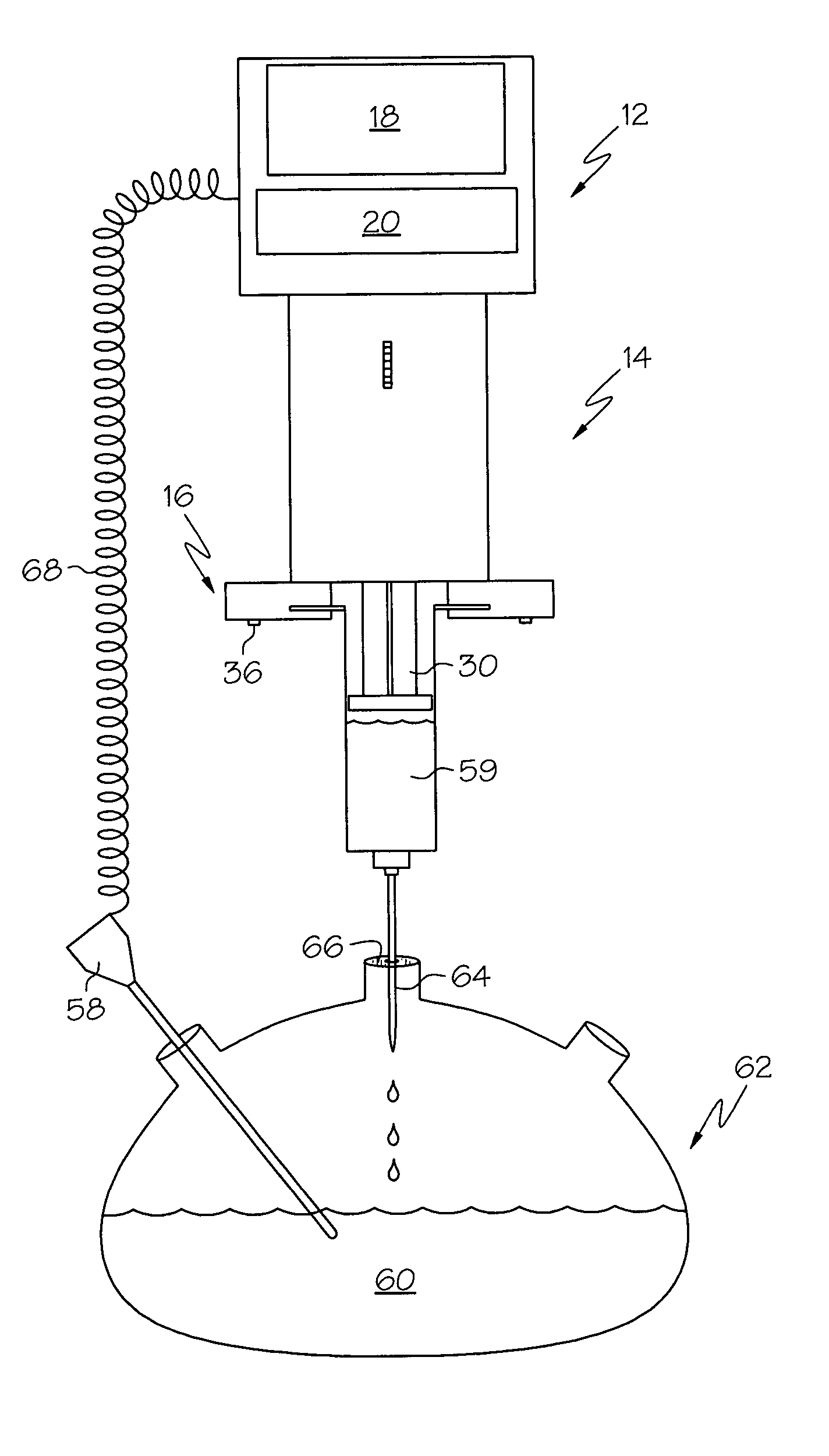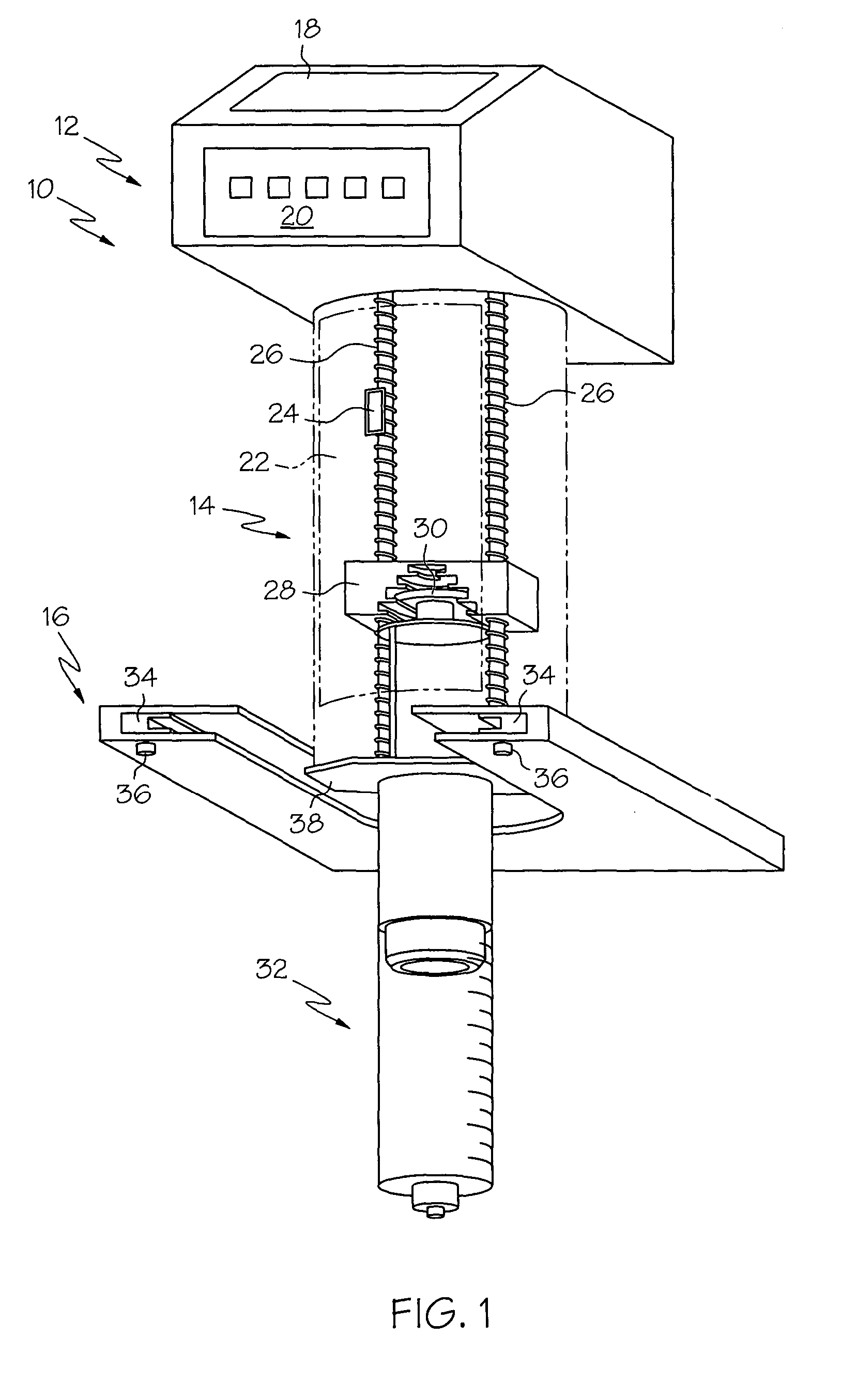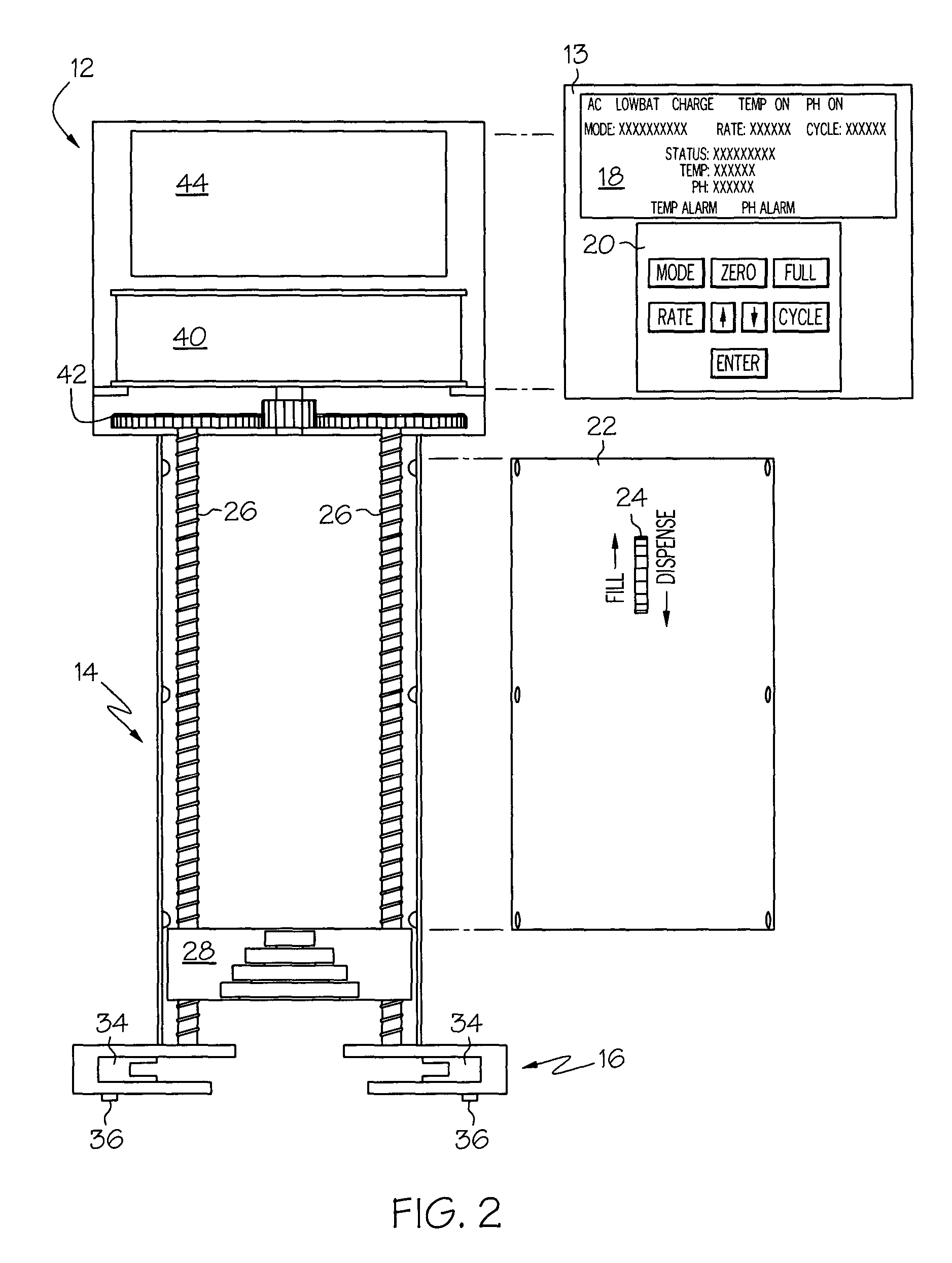Syringe pump
a technology of syringe and syringe, which is applied in the direction of piston pumps, laboratory glassware, instruments, etc., can solve the problems of unreliable control, poor use of valuable labor time, and no direct control of reaction mixture, so as to reduce the amount of human monitoring and facilitate the dispense of reagents
- Summary
- Abstract
- Description
- Claims
- Application Information
AI Technical Summary
Benefits of technology
Problems solved by technology
Method used
Image
Examples
Embodiment Construction
[0027] For purposes of this invention, the term “pH” is defined as follows: a measure of acidity and alkalinity of a solution that is a number on a scale on which a value of 7 represents neutrality and lower numbers indicate increasing acidity and higher numbers increasing alkalinity and on which each unit of change represents a tenfold change in acidity or alkalinity and that is the negative logarithm of the effective hydrogen-ion concentration or hydrogen-ion activity in gram equivalents per liter of the solution.
[0028] Referring now to FIG. 1 of the drawings, the syringe pump 10 includes a head 12, a body 14 (shown in phantom) and a base 16. On the outer housing of the head 10 there is display 18, preferably in the form of an LCD display panel, and a keypad 20 having control buttons. On the outer housing of the body 14 there is a body cover 22 (in phantom) with a manual control switch 24. Inside the housing of the body 14 are drive shafts 26 and a drive block 28 which secures a ...
PUM
 Login to View More
Login to View More Abstract
Description
Claims
Application Information
 Login to View More
Login to View More - R&D
- Intellectual Property
- Life Sciences
- Materials
- Tech Scout
- Unparalleled Data Quality
- Higher Quality Content
- 60% Fewer Hallucinations
Browse by: Latest US Patents, China's latest patents, Technical Efficacy Thesaurus, Application Domain, Technology Topic, Popular Technical Reports.
© 2025 PatSnap. All rights reserved.Legal|Privacy policy|Modern Slavery Act Transparency Statement|Sitemap|About US| Contact US: help@patsnap.com



